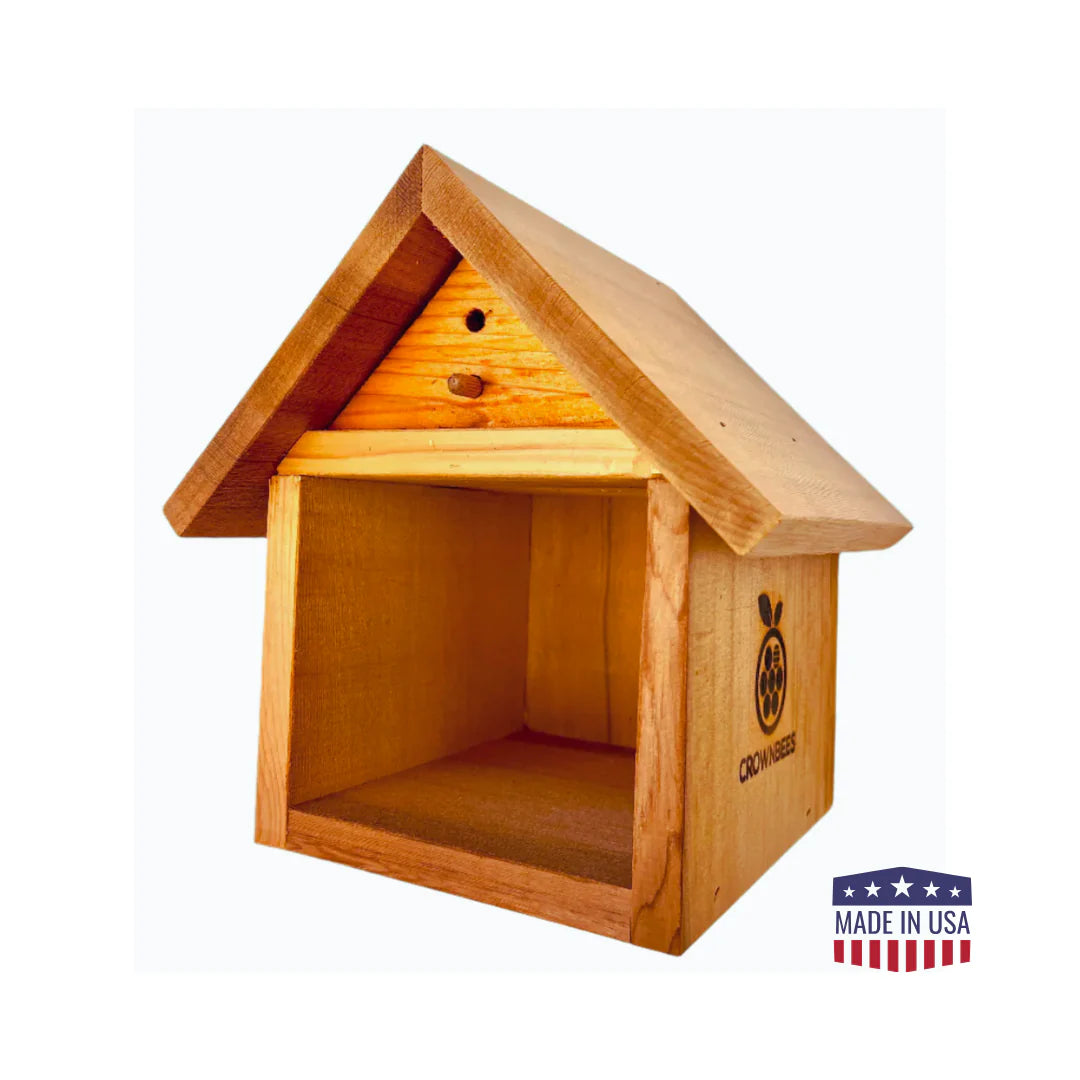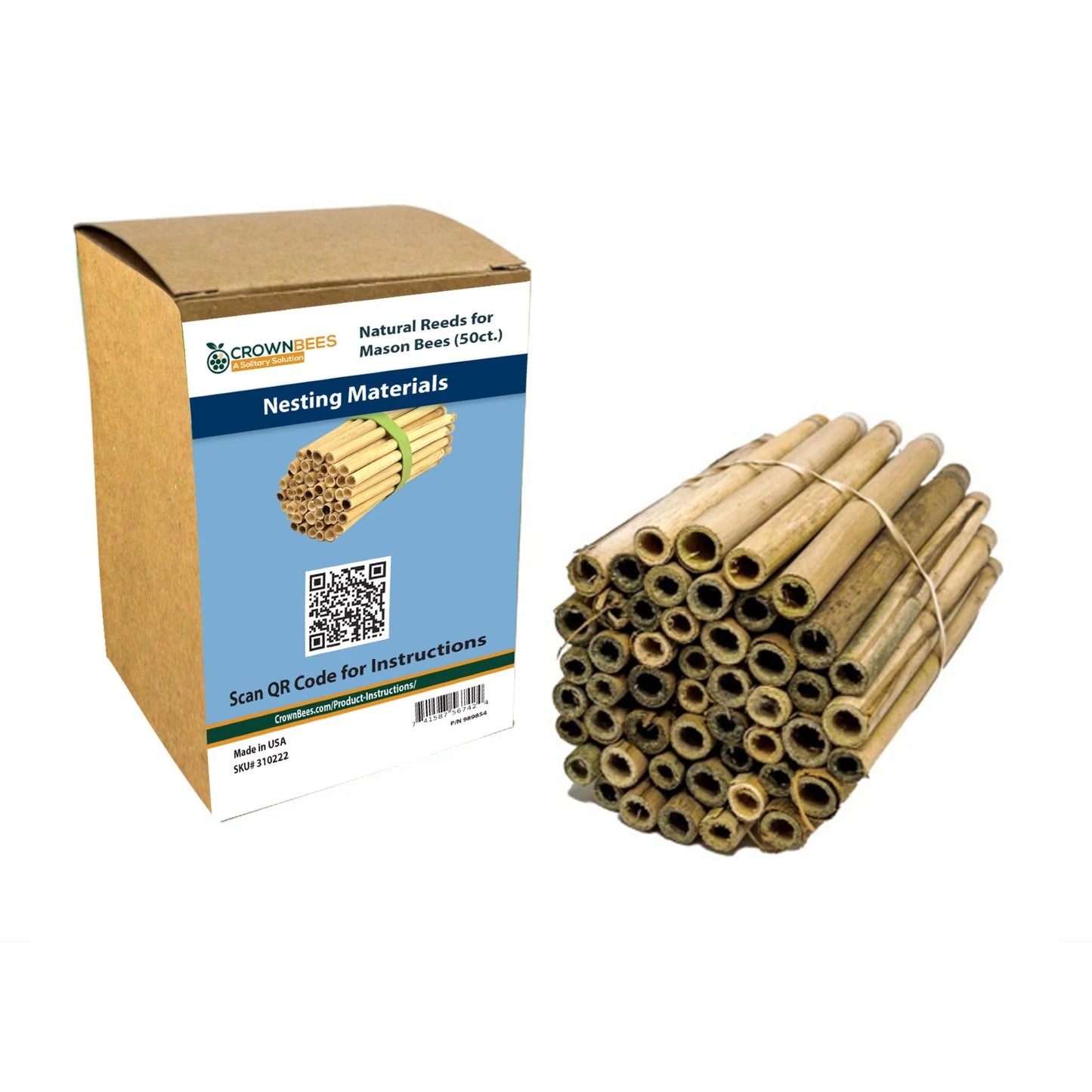
If you build it, they will come. Right? Well, not necessarily. "Why aren't my bees nesting?" is one of the most common questions we receive from our bee raisers.
We understand how frustrating it can be to take the time to create safe nesting habitats for solitary bees only to have them struggle to reproduce or to fly off in search of more desirable nesting sites. There are a variety of factors that could be at play in this scenario. Bees are wild animals, after all, and we can't (and shouldn't) expect them to nest in our bee hotel just because we'd like them to. However, it could very likely be due to the bees' sensitivity to pesticides, including insecticides, fungicides, and herbicides.
Even if you refrain from using pesticides in your yard and garden, they may still be present due to the highly mobile, accumulating nature of these harmful chemicals. Unfortunately, this means even if we do everything right, the wind may still carry pesticides and chemical scents into our yards from neighboring lawns and gardens.
Pesticides are commonly used in urban, rural, and agricultural environments to kill pests, diseases, and weeds. However, many pesticides also harm pollinators. This article highlights a few dangers of pesticide use on our bee species and some pollinator-friendly pest control strategies to try out in your garden.
Most of us have probably heard of the sharp insect declines around the globe. While there is no single overriding cause of insect declines, scientists agree that the ubiquitous use of pesticides is a crucial factor behind this disturbing phenomenon. The direct and indirect toxicity of pesticides harms our managed honey bee and solitary bee populations, as well as our wild native bee populations.

Effects on Bee Health
Certain pesticides, or pesticides in high concentrations, can kill bees outright. Carbamates, organophosphates, synthetic pyrethroids, chlorinated cylcodienes, and neonicotinoids are all highly toxic to bees. If you are as confused by these chemical names as we were, Beyond Pesticides & Center for Food Safety teamed up to create a great list of Bee-Toxic Pesticides to Avoid.
Even at low doses, pesticides can have sublethal effects on bees. Impacts include:
- Impaired memory and learning
- Reduced foraging efficacy
- Disorientation, which also impairs foraging
- A higher percentage of male offspring
- Reduced nesting activity
- Increased susceptibility to disease and parasites

Exposure Pathways
As important as understanding the adverse effects of pesticides on bee populations are the avenues in which our bee populations become exposed to these chemicals.
Pesticides can accumulate in both soil and water. They can even be taken up by plants and accumulate in the pollen of flowering plants. Pesticides are also mobile, often moving from neighboring lawns and gardens to ours. The often invisible problems of pesticide drift and pesticide runoff can move pesticides to areas without our knowledge and harm both insects and humans alike.
Bees and other pollinators may be exposed to pesticides in numerous ways, including larval ingestion, adult ingestion, direct contact, residue contact, and contact with contaminated nesting areas and materials.
Larval Ingestion - Bees collect pollen and nectar to feed their offspring. Suppose the food sources are contaminated by pesticides through uptake by the plant, from direct contact (by spraying), from pesticide drift, or the planting of pesticide-treated seeds. In that case, larval survival or later adult fitness can be affected.
Adult Ingestion - Active solitary adult bees will ingest nectar to boost their energy levels. Adult females will also consume small amounts of the leaves and mud they collect to build their nests. A recent study found that solitary bees exposed to soil with moderate pesticide levels reduced nesting activity by 42%. In bees exposed to high levels of pesticides, females produced 40% fewer nest cells per day!
Direct & Residue Contact - Besides being directly sprayed during pesticide applications, bees often walk on or through contaminated water, soil, lawns, flowers, leaves, or artificial nest materials.
Contaminated Nesting Areas & Materials - Another way both adults and larva may be exposed to pesticides is from their nest building materials (usually mud or leaves). As I mentioned earlier, pesticides can accumulate in the soil, water, and plants. Female bees often use these materials to build nest walls and seal their nests from predators.

What Can We Do?
At this point, you might be wondering what we can do to reduce our usage of pesticides to help improve the health of our pollinators (and ourselves). The great news is that there are a variety of simple ways to minimize both our usage of and exposure to pesticides.
- Where possible, avoid pest problems in the first place by burying infested plant residues and removing pest breeding grounds, such as standing water;
- Consider using beneficial insects as a biological pest control method;
- Say "NO" to RoundUp. Try non-toxic alternatives first. If you can, pull weeds by hand instead of using a weed killer. Or better yet, host a weed pulling party!
- Before reaching for the pesticides, ensure the pest population has reached a level where control is necessary. Remember, not all insects are pests, and many of those we consider "pests" have naturally evolved with our plant and animal species and have ecological benefits. E.g., if we kill our plant eating aphids, our ladybugs will lose their primary food source. If we lose our ladybugs, many toad and bird species will suffer. Birds are essential for seed dispersal and pest control.
- Plant native flowering plant species to support pollinators. Take care to choose species that are naturally resistant to insect pests. If mosquitoes are an issue, try non-chemical methods like removing standing water and planting some natural mosquito repellent plants, such as sweetgrass.
- Buy organic, locally grown fruits and vegetables. Certified Organic is the best assurance of pesticide-free produce and supports farmers that participate in pollinator-friendly practices. National surveys have also shown that fruits and vegetables from farmers’ markets contain fewer pesticides even if they’re not organic.
- If you choose to use a pesticide, check for "Bee Hazard" warnings and pollinator precautions and follow instructions carefully.
We hope this article helps highlight the importance of having a chemical-free lawn and garden when raising bees. Some bees will be deterred from nesting altogether if pesticides are present, others may stick around, but their nesting activity and offspring survival rates may be lower.
If you are having trouble getting bees to nest in your yard, try reducing your pesticide usage. If you already have a pesticide-free yard and garden, then share your knowledge with your neighbors. It may be that your bees are being affected by pesticide drift or runoff. We've created ready-to-print information for you to share with your neighbors to help get the conversation started. Engaging other people with the issues is a powerful means for increasing awareness and making positive change!
Helpful Pesticide Resources
How to Reduce Bee Poisoning from Pesticides
Pollinator Partnership - About Pesticides
Integrated Pest Management (IPM) - National Pesticide Information Center


